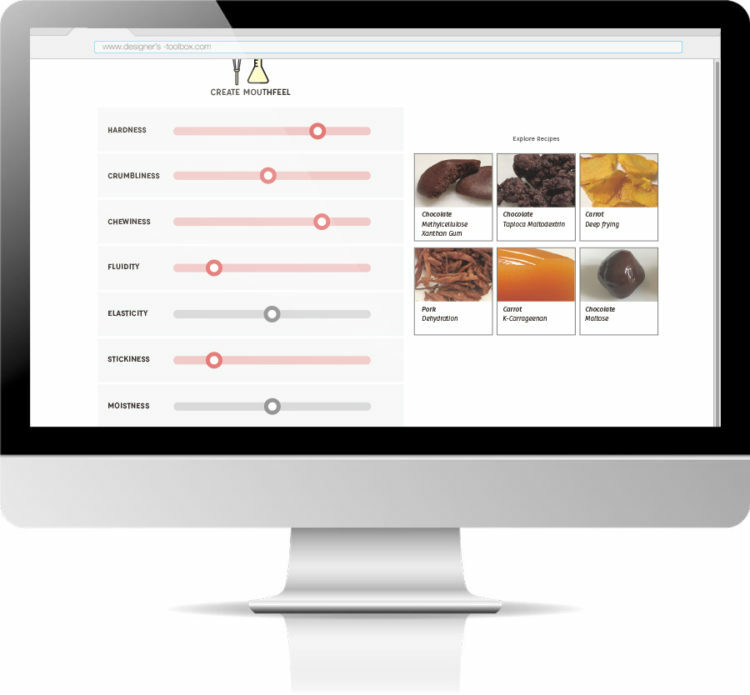Enhancing food texture
Project by Tsai-Wen (Heidi) Mao
Supervised by Rick Schifferstein and Annemiek van Boeijen
Many welfare diseases are connected to unhealthy eating habits, typically related to consuming too much food that contains a lot of fat, sugar, and salt (e.g., World Health Organization, 2011). Satiation is the physiological signal to terminate eating, but the sensory rewards that food provides often override this signal (Rolls, 2012). As a consequence, people tend to consume a surplus of energy. Being conscious of the food one is eating enables people to notice the satiation signal and to have more control of their energy intake. Offering food with textures that draw attention or require people to use effort in mastication are likely to increase oral exposure time and feelings of satiation (e.g., de Graaf, 2012; Hogenkamp & Schiöth, 2013) and could, therefore, provide an effective means to tackle obesity.
Food products with more texture may be perceived as more satiating, because they make people more aware of what they eat, and thus could help to decrease obesity. Tsai-Wen (Heidi) Mao (2017) wanted to enable designers to enhance the texture of food products. Snacks were chosen as target products, because the most popular snacks are denser in energy and people tend to be less conscious while snacking compared to when they consume their main meals, for instance because they are watching television (Bellisle, 2014). Furthermore, existing snack products encompass a wide variety of textures, suggesting that people are open to try snack products with many different textures (Szczesniak, 2002).


We identified several events that are likely to make people more conscious of their eating experience while snacking. These include perceivable or surprises changes in the mouth, the degree of filling of the mouth, and the efforts required for the mastication of the food. Furthermore, people may become conscious of the quantity they are consuming when the food requires more manipulation in the mouth, because of the sounds they hear during chewing, or because they observe that the food stays in the mouth for a longer time.
In terms of food texture, Mao chose hardness, fracturability, chewiness, viscosity, elasticity, adhesiveness and moistness as the characteristics that would be the most relevant for people’s texture experiences as well as have impact on oral exposure time. To obtain insight in how to create specific intended eating experiences, she created 83 texture prototypes of pork meat, carrot, and chocolate by applying existing cooking techniques, adding ingredients, and incorporating some of her own creative ideas. The prototyping processes were documented through written explanations, pictures, and videos in an online web blog: https://designerstoolbox.tumblr.com/. After testing some of her prototypes to determine the relationships between texture characteristics and the factors determining the degree of conscious snacking, she used the outcomes of her research to develop an interactive webpage that provides intuitive directions on how food designers can create a specific mouthfeel or can design for conscious and satiating snacking experiences through texture manipulations.


References
Bellisle, F. (2014). Meals and snacking, diet quality and energy balance. Physiology & Behavior, 134, 38-43.
de Graaf, C. (2012). Texture and satiation: The role of oro-sensory exposure time. Physiology & Behavior, 107(4), 496-501.
Hogenkamp, P. S., & Schiöth, H. B. (2013). Effect of oral processing behaviour on food intake and satiety. . Trends in Food Science & Technology, 34(1), 67–75.
Mao, T. W. (2017). Satiating and conscious snacks: Facilitating healthy eating experiences by manipulating food textures. (Master thesis). Delft University of Technology, Delft, the Netherlands.
Rolls, E. T. (2012). Taste, olfactory and food texture reward processing in the brain and the control of appetite. Proceedings of the Nutrition Society, 71(4), 488-501.
Szczesniak, A. S. (2002). Texture is a sensory property. Food Quality and Preference, 13(4), 215-225.
World Health Organization. (2011). Global status report on noncommunicable diseases 2010. Geneva: WHO.
Want to read more about this project?
Download Heidi’s report
